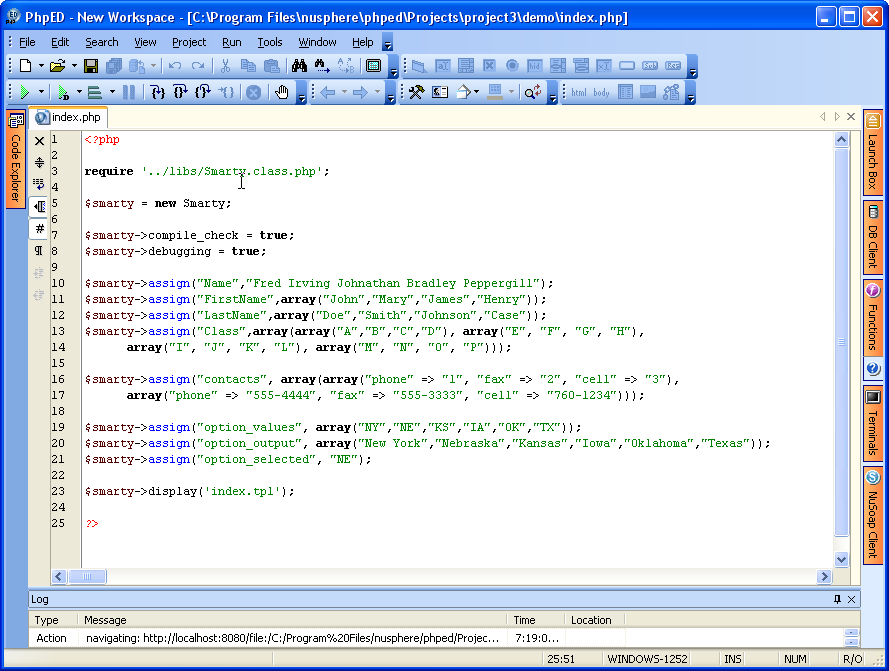 We can use an if statement to display our image, from the previous
section. If the user selected "church", then display the church
image. If the user selected "kitten", then display another image (the
kitten image, which is also in your images folder).
Here's some code:
We can use an if statement to display our image, from the previous
section. If the user selected "church", then display the church
image. If the user selected "kitten", then display another image (the
kitten image, which is also in your images folder).
Here's some code:
<?PHP
$kitten_image = 1;
$church_image = 0;
$church_image = 0;
if ($kitten_image == 1) {
print ("<IMG SRC =images/kitten.jpg>");
}
?>
Type that out, and save it as testImages.php. (Notice how there's no
HTML!) When you run the script, the kitten image should display. Let's look at the code and see what's happening.
The first two lines just set up some variables:
$kitten_image = 1;
$church_image = 0;
A value of 1 has been assigned to the variable called $kitten_image.
A value of 0 has been assigned to the variable called $church_image.
Then we have our if statement. Here it is without the print statement:$church_image = 0;
if ($kitten_image == 1) {
}
Notice how there's no semi-colon at the end of the first line - you don't need
one. After the word "if" we have a round bracket. Then comes our variable
name: $kitten_image. We want to test what's inside of this variable.
Specifically, we want to test if it has a value of 1. So we need the double
equals sign (==). The double equals sign doesn’t really mean “equals”.
It means “has a value of”.What we want to say is:
"If the variable called $kitten_image has a value of
1 then execute some code."
To complete the first line of the if statement we have another round bracket,
and a left curly bracket. Miss any of these out, and you'll probably get the
dreaded parse error!The code we want to execute, though, is the print statement, so that our kitten image will display. This goes inside of the if statement:
if ($kitten_image == 1) {
print ("<IMG SRC =images/kitten.jpg>");
}
You need the semi-colon at the end of the print statement.But if your if statement only runs to one line, you can just do this:
if ($kitten_image == 1) { print ("<IMG SRC = images/kitten.jpg>");
}
In other words, keep everything on one line. PHP doesn't care about your spaces,
so it's perfectly acceptable code. Not very readable, but acceptable!To make use of the church image, here's some new code to try:
<?PHP
$kitten_image = 0;
$church_image = 1;
$church_image = 1;
if ($kitten_image == 1) {
print ("<IMG SRC =images/kitten.jpg>");
}
if ($church_image == 1) {
print ("<IMG SRC =images/church.jpg>");
}
?>
Notice that the $kitten_image variable now has a value of 0 and that
$church_image is 1. The new if statement is just the same as the first.
When you run the script, however, the church image will display. That's because
of this line:
if ($kitten_image == 1) {
That says, "If the variable called $kitten_image has a value of 1 ...
". PHP doesn't bother reading the rest of the if statement, because $kitten_image
has a value of 0. It will jump down to our second if statement and test that:
if ($church_image == 1) {
Since the variable called $church_image does indeed have a value of
1, then the code inside of the if statement gets executed. That code prints
out the HTML for the church image:
print ("<IMG SRC =images/church.jpg>");
In the next section, we'll take a look at if ... else statements.







0 comments:
Post a Comment